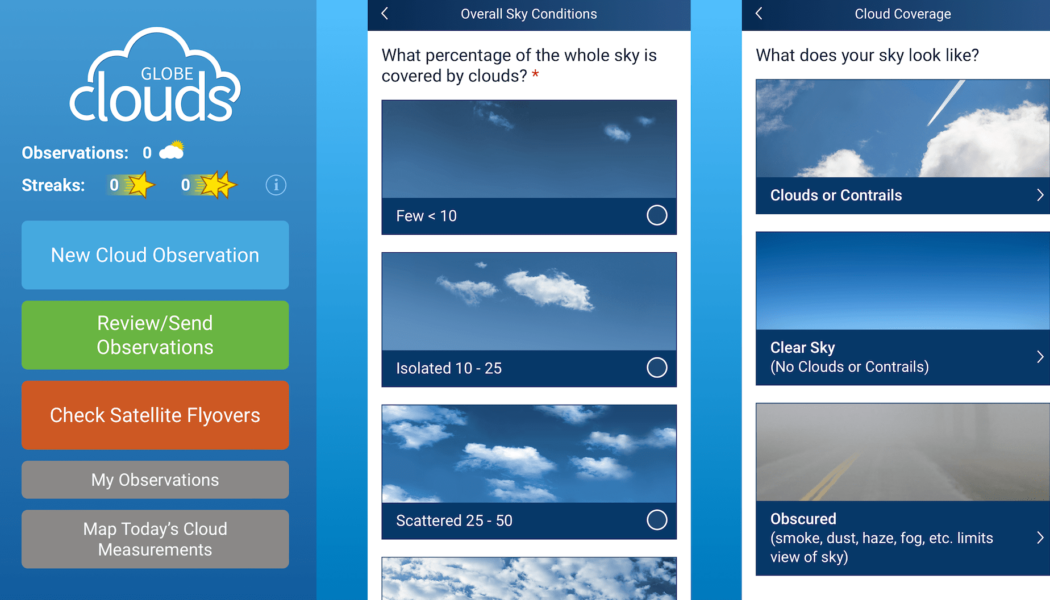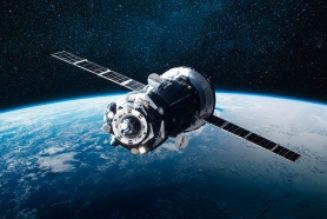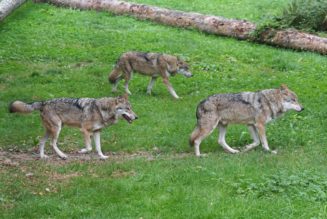Spend your day laying outside looking at the clouds. It’s helpful. Really.
With just a few taps on your phone screen or tablet as you peer up at the sky, you could contribute to a useful scientific database and even help predict weather patterns. And all you need to do is share what sorts of clouds you see above your head. The Global Learning and Observations to Benefit the Environment (GLOBE) citizen science program only requires an app download and a few minutes of your time.
While identifying and photographing clouds may not sound like a highly useful contribution, it’s in fact an easy and beneficial way to contribute to scientific research. After all, explains Marilé Colón Robles, Project Scientist for NASA GLOBE Clouds, the puffy white masses hovering above your head play an important role in transferring and diffusing energy from the sun to different areas of the Earth and can signify a wide array of weather patterns and anomalies to come. But clouds can change rapidly, meaning frequent observations are required, including from citizen scientists who can (quite literally) help complete the atmospheric picture.
Observations of the sky that you make in the app are also added to an open source database that is available for scientific research. In fact, data collected by everyday individuals have been used by professionals and students alike to study the meteorological effects of eclipses, examine major meteorological events, and study the implications of vertical cloud structure (like when different types of clouds are stacked on top of each other) on weather patterns and climate change, even how cloud cover affects fishing. Researchers are even working to find out how they can use the data for forecasting purposes, Colón Robles states. In short: It’s an app that’s both useful and easy to use, no experience necessary.
How it works
When you make a cloud observation, you’re supplying researchers with a different point of view of the atmosphere, which is valuable for specific research. Sure, there are plenty of satellites that constantly record images of clouds, but only from above, meaning scientists generally only have access to top-down views and tend to involve reports of more high-atmosphere clouds. Land-based humans on the other hand–as you might expect–report more low-level clouds.
That’s largely because satellite views of lower lying clouds are often obstructed by higher clouds. That’s reversed for those making observations from the ground: People sometimes can’t make out clouds higher in the sky because clouds that are closer to earth are in the way.
When you combine the two, you get a much more complementary and accurate picture of what’s actually happening in the sky. What’s more, Colón Robles explains, there’s only about a 10 percent difference between the total cloud cover that Earth-bound observers and satellites see, a respectable data gap given most observers didn’t study climatology or meteorology and are seeing the sky from a very different perspective.
App users might also be keen to know that for every cloud observation made, the scientific team at the NASA Langley Research Center in Virginia compares all incoming submissions and photos with satellite data. They may even send you back a personalized email complete with a table with the satellite observation and your own. Your chances of receiving such an email are even better if you use the app to time your submission with the passing of low-orbiting satellites.

Tips for making cloud observations
You can make observations from almost anywhere in the world at any time of day, including dusk and dawn, and any time of year whether the sky is clear, cloudy, or somewhere in between. It’s best to have a fairly unobstructed view where large trees or buildings won’t get in the way of seeing a large expanse of sky.
Then, observe often. “The more data we have, the better the chances of getting the statistical numbers we need to get a signal out of the noise,” Colón Robles says. “Clouds are so tricky, They’re always changing. In short: the more data you collect and share, the better.
You’ll need a WiFi connection to download the app, make an account, and submit data. But you don’t need a connection to collect the data; you can send it in after you get WiFi again. While you’re at it, you can also share reports on mosquitos, trees, and land cover from within the app.
Download the app and create an account
Download the GLOBE Observer app for Apple or Android products and create an account. You can even opt in to be contacted by a scientist if you share reports or images they think could benefit from more details.
Confirm your location
Before you make any observations, confirm that the date, time, and location that your phone detects are correct.
Identify clouds
Next, the app’s Cloud Wizard will help you specify the amount of cloud cover (some clouds, fog, or clear) and what percentage of the sky is covered. You can then identify what specific clouds and contrails are present manually or via a guided process that helps you determine the altitude of clouds (low, medium, or high) and whether clouds are puffy, layered, or wispy.
You’ll also be guided through selecting the current conditions, including rain or snow, whether there’s ice, mud, and leaves on the trees.
Take photos
The app will then help you line up the perfect shot of the sky in every direction. Satellites don’t always see what people on the ground see, like the haboob dust storm that swept through Australia in 2020, so these images are often extremely helpful to scientists.
Submit your data
When you’ve completed all the steps, simply submit the data (or do it later if you don’t have a wifi or data connection).
Bottom line
It doesn’t take a masters degree in meteorology, climate science, or environmental science to contribute meaningful data to impactful research databases. All that’s required is a clear view of the sky, a simple app, and the willingness to share a little slice of the sky with researchers around the world.









